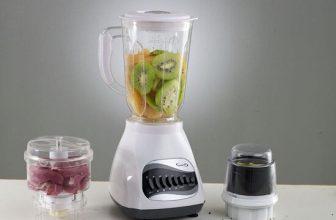
(Note: Some of the links in this post are affiliate links, and we will be compensated when you make a purchase by clicking through our links at no additional cost to you.)
What Are The Most Accurate Pedometers in 2025?
The smallest choices make the biggest difference, and tracking your steps with a pedometer can motivate you to make more active choices by making a few changes in your routine. By choosing the stairs over the elevator or walking to the train instead of driving to work, you’re literally steps closer to the 10,000-step goal recommended by health and fitness professionals. Tracking steps boosts your awareness about your habits and activity level, and when it comes to being active, knowledge is power. So what are the 5 most accurate pedometers in 2025?
QUICK RECOMMENDATIONS
Check out this quick list of our favorites if you’re in a hurry, or continue scrolling to see our full top 5 list with in-depth reviews.
#1: Omron Tri-Axis Alvita Optimized Pedometer
#2: 3DTriSport Walking 3D Pedometer
#3: 3DFitBud Simple Step Counter
#4: iGANK Simple Walking Pedometer (Best budget)
#5: Garmin vívofit 4
Why Buy A Pedometer?
Fitness trackers are all the rage nowadays with their fancy features and key tracking metrics such as sleep, calories, steps, etc. However, a simple, inexpensive, pedometer which does one task only – counts your steps, may be all you need to achieve your health and fitness goals. When you’re paying attention to how much you walk, you’ll notice that you’ll want to move more. Pedometers are great if you have a busy schedule and can’t commit to fitness classes or a regular workout routine. Counting your steps can motivate you to beat your own score or compete with a friend. You can gauge how hard you work day to day from on steps and it’s a great way to measure progress if you’re an athlete already training.
What to Look For When Shopping for a Pedometer
Pedometers don’t actually count steps; rather, they sense movement. This means it can be easy for a pedometer to over count non-steps. If you’re looking to up your activity by meeting a specific step goal, the more accurate the pedometer, the better. However, if you’re looking to wear a pedometer during your regular fitness routine to gauge the activity you’re already aware of, comfort and design are the best qualities to look for.
Pedometers are most accurate when you wear them on your hip, so look for small pedometers that will sit comfortably on your belt loop or waistband. Wristband and bracelet pedometers are best if you want to monitor your activity constantly. These types of pedometers are best for running because they’ll track the movement of your arms rather than the swing of your hips. Below are some other considerations that are useful when you’re shopping for a pedometer.
Tracking and Recording
Accuracy is the key to a good pedometer. The most feature-stuffed pedometers are useless if they don’t accurately count your steps. Tri-axis accelerometers are the most accurate and most common sensors in higher-end pedometers, but many other devices use pendulums to sense back and forth movement of your stride.
Look for a pedometer with a high step count limit. Many reach up to 100,000 and have an automatic reset. For the most accurate counts, look for pedometers that require you to enter your weight and stride to customize your stats.
Features
Many smart pedometers have downloadable options to sync your step count and other stats to your computer or smartphone, so you don’t have to manually record your numbers.
Sometimes it’s best to keep it simple. Cheaper pedometers won’t sync to mobile devices, but they still have extra features like stop watches, speedometers and altimeters to count the stairs you’ve climbed. You may have to record your information manually, but many pedometers have memories that last up to a week so you can track your progress.
Design
The best place to wear any pedometer, regardless of the type of sensor it uses, is on your hip. Tri-axis accelerometers and pendulum sensors both measure the back and forth movement of your legs as you walk, so belt loops and waistbands are best for any type of pedometer. Look for a pedometer that has a clip or leash to secure the device to your clothing.
Whether you’re going to wear a pedometer daily for casual use or for exercise, look for something that’s lightweight. You don’t want a bulky device bouncing around on your person while you’re walking or running. If you don’t like wearing a device on your hip, wristband pedometers are growing in popularity because of their fashionable look and near invisible feel.
Battery life is also crucial when you’re looking for a pedometer, assuming this is a device you’ll use every day to record your entire day. Smart pedometers typically have a battery that last days, while more basic pedometers can last months on a single battery, and at their longest, up to a year.
Whether you’re an avid runner or a casual walker, pedometers are an inexpensive way to count your steps and monitor your daily activity. By recording your numbers, you’ll learn more about yourself and find ways to make small, positive choices that will improve your health. Here are the 5 most accurate pedometers:
1. Omron Tri-Axis Alvita Optimized Pedometer
Whatever activity you want to monitor, this Omron Tri-Axis Alvita Optimized pedometer can handle it. It knows the difference between normal walking steps and more brisk steps, counting both separately. Plus, it can tell you how many calories you’ve burned to help motivate you further.
- Affordable
- On-device data memory
- Comprehensive movement data
- No smartphone app or associated cloud data management
2. 3DTriSport Walking 3D Pedometer
The 3DTriSport Walking 3D Pedometer is a great Motivator which can help you Achieve your Fitness Goals, perfect for Adults, Seniors and Children. With the latest Tri-Accelerometer (Tri-Axis) Technology to Accurately Measure your Steps when Carried in any Position and can be Worn around your Neck by using the Lanyard included or can be placed in your Pocket or Bag.
- Inexpensive
- Easy to use
- Records accurately irrespective of orientation
- Large and easy to read display
- 30 days memory log helps keep track of progress
- Inconvenient setup
- Bulky
3. 3DFitBud Simple Step Counter
Designed with simplicity and ease of use for everyone that wants an accurate Step Counting 3D Pedometer. No Bluetooth, downloads, or smartphone connections are required. With its simple single step counting function, you can view your step record on the move.
- Large print display
- Only one button
- No app interface
- No daily sorting of data
4. iGANK Simple Walking Pedometer
Designed with simplicity and ease of use for everyone that wants an accurate Step Counting 3D Pedometer. No Bluetooth, downloads, or smartphone connections are required. With its simple single step counting function, you can view your step record on the move.
- User-friendly
- Long battery life
- Stores up to 30 days of records
- 3D tri-axis sensor for accurate tracking
- No advanced tracking or features
- Some people complain of some inaccuracy on uneven terrains
5. Garmin vívofit 4
Find more ways to beat yesterday with easy-to-use vívofit 4. It brings you fitness tracking and the freedom to keep moving without taking a break to recharge. With its 1+ year battery life, vívofit 4 is perfect to wear 24/7, so you’re always tracking your activity
- Incredible battery life
- A color screen
- Affordable
- Very small display
- Strap can feel stiff
- Difficulty pairing to some mobile devices
- Not many size options or colors












